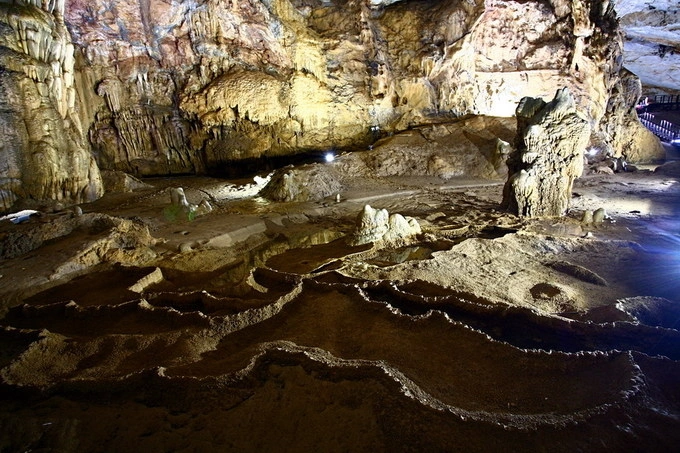Edition: International | Vietnamese
© Copyright 1997 VnExpress.net. All rights reserved.
 |
|
Paradise Cave is part of the UNESCO-recognized Phong Nha – Ke Bang National Park, 70 kilometeres (43 miles) northwest of Dong Hoi City in central Vietnam. Discovered by a local man in 2005, the cave was later fully explored and unveiled in 2010 by researchers from the British Cave Research Association. |
 |
|
The cave can reach 80 meters (87 yards) high, while the widest point stretches to 150 meters. Its limestone formation’s history of 350 to 400 million years has produced eye-catching stalactites and stalagmites. |
 |
|
The explorers, enthralled by the beauty of limestones inside the cave, named it Paradise. Since then, the cave has become a tourist attraction. |
 |
|
Wooden stairs have been installed for the first 1 kilometer that's open to the public, which involves a relatively easy walk of half an hour. The full-length trip requires special permission and is only available for research. |
 |
|
The mammoth stalactites and stalagmites are well lit by an artificial lighting system. Huge chambers of pale blue rocks and white limestones follow each other as you descend deep into the cave. |
 |
|
Some of the formations have strange shapes such as an elephant or giant mushroom. |
 |
|
Paradise Cave’s limestones are commonly deemed one of the most beautiful in the national park. Its stalactites and stalagmites are constantly growing unlike most other caves where the rocks are now dry. |
 |
|
Adventure lovers may enjoy a 7 kilometer trekking tour in the cave that needs to be booked in advance. The tour explores darker parts and includes kayaking or swimming, sliding around in mud, and climbing rough wet rocks. |
 |
|
Tourists often combine Paradise Cave with Dark Cave, another popular site in Phong Nha – Ke Bang, 6.5 kilometers to the north. |